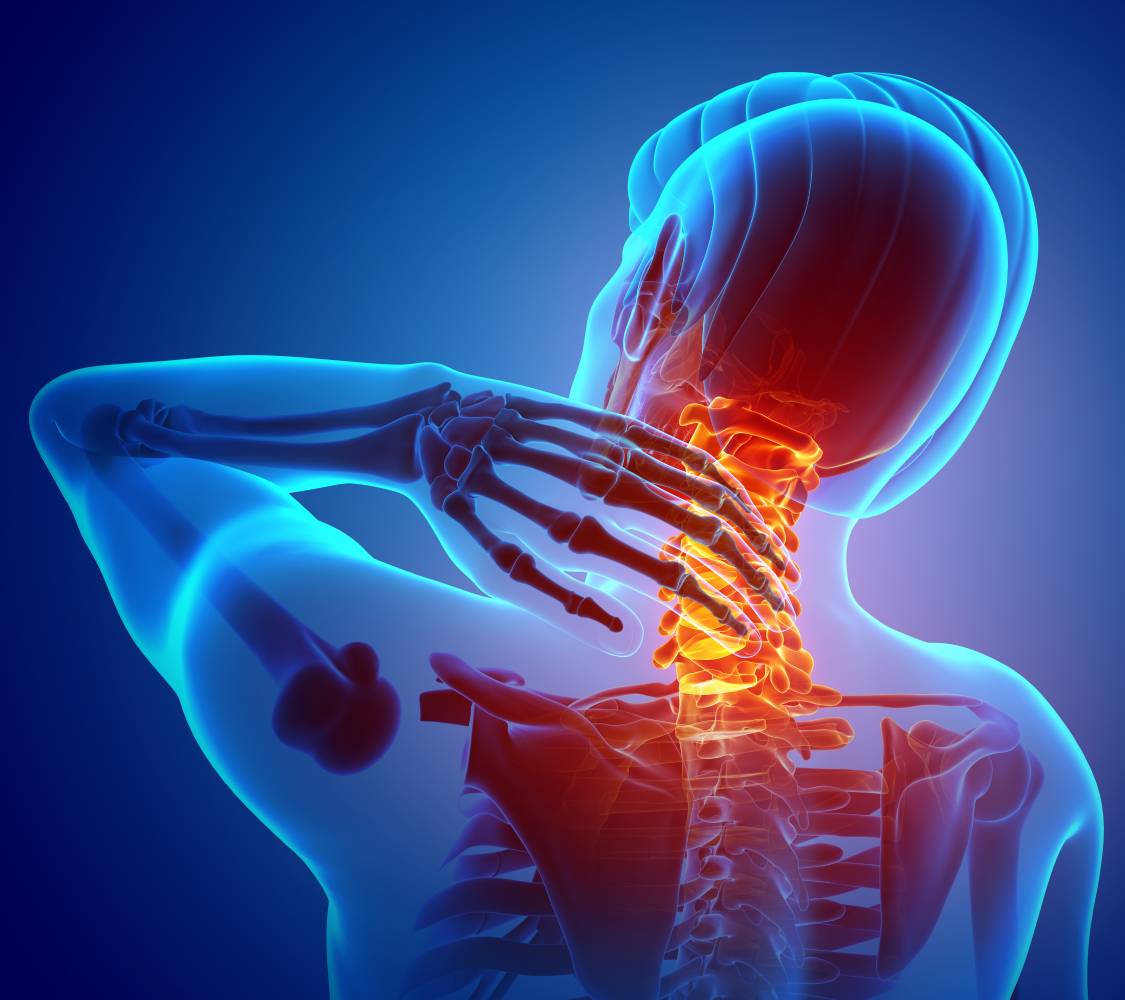Neck pain is a common yet broad diagnosis which encompasses a wide range of injury and disease pathologies. Despite the fact that literature on neck pain has increased exponentially in recent years, the number of interventions utilized by health care providers has stagnated. Moreover, those interventions which have gained acceptance by the medical community err on the side of more, rather than less, invasive, which in turn may contribute to poor prognosis. For these reasons, authors Hurwitz et al. published a comprehensive literature review detailing the most promising non-invasive interventions for neck pain spanning the past two decades of literature. The author’s inclusion criteria were a minimum of 20 study participants with neck pain of various etiologies, including whiplash-associated disorders, work-related pain or strains, and unknown causes.1
Hurwitz et al. separated the evaluated non-invasive neck pain interventions into several categories: exercise, medications, manual therapies, physical modalities, and collars.
Exercise: While the efficacy of exercise alone was not evaluated in any of the included studies, exercise was a common component of intervention programs. Patients with neck pain relating to whiplash were shown to benefit from eye fixation and other active exercises.2 Significantly, supervised exercise was shown to confer more benefit than at-home exercise, which suggests the importance of consistency in both movement and practice.3
Medications: Only two studies investigated the efficacy of medications for the treatment of neck pain: primarily, corticosteroid injections, which were not effective for acute zygapophysial joint pain.4,5 Methylprednisolone infusions resulted in fewer sick days and reduced pain; however, the authors were unable to assess whether these effects were curative or merely symptom masking.
Manual therapies: Hurwitz et al. reported that manual therapeutic interventions which involved mobilization (i.e., cervical mobilization) were generally more effective than more passive interventions (i.e., general advice or soft collars).6,7,8 On a similar note, patients who received more intensive manual therapies experienced shorter periods of disability and self-reported improved satisfaction with recovery.
Physical modalities: The authors reported that electromagnetic force therapy reduced pain and need for analgesics. As with manual therapies, active physical modalities tended to outperform passive in terms of pain management and treatment outcome.
Collars: The examined studies demonstrated that soft collars conferred little to no benefit, or even reduced benefit when compared directly to more active interventions.9 Additionally, in cases of whiplash, rigid immobilization collars did not outperform active mobilization 72 hours after the incident occurrence.1
Overall, non-invasive techniques for management of neck pain appear to be a promising avenue of exploration for healthcare providers. However, as Hurwitz et al. demonstrated, not all techniques are created equal, and further investigation is required to determine which are candidates for increased incorporation.
References
1 Hurwitz, E.L., Carragee, E.J., van der Velde, G. et al. Treatment of Neck Pain: Noninvasive Interventions. Eur Spine 2008; https://doi.org/10.1007/s00586-008-0631-z
2 Cassidy JD, Carroll LJ, Coˆ te´ P, et al. Does multidisciplinary rehabilitation benefit whiplash recovery? Results of a population-based incidence cohort study. Spine 2007;32:126 –31. DOI: 10.1097/01.brs.0000249526.76788.e8
3 Bunketorp, L., Lindh, M., Carlsson, J., & Stener-Victorin, E. (2006). The effectiveness of a supervised physical training model tailored to the individual needs of patients with whiplash-associated disorders–a randomized controlled trial. Clinical rehabilitation, 20(3), 201–217. https://doi.org/10.1191/0269215506cr934oa
4 Barnsley L, Lord SM, Wallis BJ, et al. Lack of effect of intraarticular corticosteroids for chronic pain in the cervical zygapophyseal joints. N Engl J Med 1994;330:1047–50. DOI: 10.1056/NEJM199404143301504
5 Pettersson K, Toolanen G. High– dose methylprednisolone prevents extensive sick leave after whiplash injury. A prospective, randomized, doubleblind study. Spine 1998;23:984. DOI: 10.1097/00007632-199805010-00004
6 Mealy K, Brennan H, Fenelon GC. Early mobilization of acute whiplash injuries. Br Med J (Clin Res Ed). 1986;292:656 –7. DOI: 10.1136/bmj.292.6521.656
7 Provinciali L, Baroni M, Illuminati L, et al. Multimodal treatment to prevent the late whiplash syndrome. Scand J Rehabil Med 1996;2. PMID: 8815995
8 Rosenfeld M, Gunnarsson R, Borenstein P. Early intervention in whiplash associated disorders: a comparison of two treatment protocols. Spine 2000; 25:1782–7. DOI:10.1097/00007632-200007150-00008
